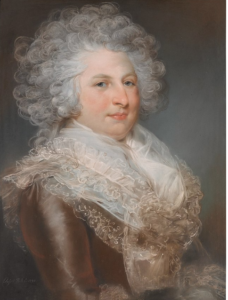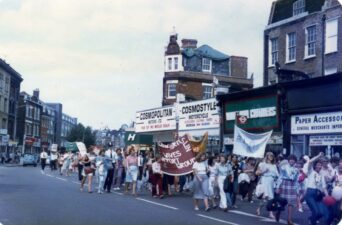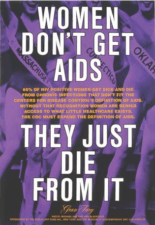I study late Georgian (early nineteenth century) material culture that is broadly ‘political’ in nature: referencing an event, campaign, or political person and looking at how individuals used them to engage with political ideas. One group of sources that I quickly became interested in were tokens often referred to as ‘conder’ tokens or tradesman’s tokens. These mass-produced tokens were used as both currencies and as collectable art pieces, with many of the functional ones reproduced for collectors.
One of the most celebrated contemporary collectors of coins and tokens, amongst many other objects, was Sarah Sophia Banks (1744-1818.) She collected at least 9000 coins and tokens, now split between the British Museum and the Royal Mint Museum. Categorised geographically, she also kept notes on who donated them to her, where some were found, and so on. Her work as a collector is immensely valuable to historians and collectors alike, and her contribution was as respected at the time as it is now. Her work clearly exhibits female participation in the cultural sphere as well as an awareness of their place as artistic objects documenting different events and topics of the period. This interest is very close to my own, and the motivation behind my academic work on the topic.
Collecting can be read as evidence that women, a group largely excluded from formal political processes, nevertheless actively engaged with the politics of the period. For example, the London Corresponding Society, a group of men formed in the 1790s to discuss politics and other topics only deemed suitable for men might have been inaccessible to women but owning and collecting tokens that they produced was an activity women could participate in. Banks’ focus on collecting objects from her lifetime differed from her peers who were more interested in collecting coins from antiquity, reflecting an interest in social relationships remarkably similar to what we now call social history. The fact that I was studying sources so well categorized and preserved by other women in the past has caused me to reflect on why women might be drawn to these objects as a source and if the relatively everyday nature of these objects contributed to them not being considered as sources worthy of study in political history.
Banks’ contribution has also made me reflect on my place as a female collector. I was encouraged into groups and societies based on my age and gender; something I didn’t expect but was pleasantly surprised by! All of my tokens and medals were purchased at roughly £10 or below, and with relatively little auction competition. Some of the factors discussed in this article regarding my upper price limit applied: the value of the object to my research, how it would benefit me, and the potential to use personal images without paying hefty fees in future projects far outweighed the price implications, especially when some were priced at what I’d spend on a coffee.
However, the more I purchased, the more personal interest could sway my decisions. A token that was rarer, or connected to a figure I personally liked or designed by someone like Thomas Spence meant I found myself more willing to push my budget with no academic use in mind. I certainly have a bias in the tokens I’ve selected, choosing topics that were of interest to me before, as well as ones that were simply the easiest to find. My focus on politics immediately rules a huge amount of tokens out, but I think being a part of the acquisition process definitely increased my interest in them as sources. It’s also made me conscious not to overstate their importance and try to be aware that in incorporating collecting into my research process, I can reflect on how they might have also been collected in the past.
Unlike a collector, my purchasing process is not affected by markers of quality. I’m not as fussed by degradation in detail or signs of wear; if anything, they’re more interesting to me. Punctures or even signs the object has been defaced multiply the research value, as they are signs of the way that the owner has interacted with the object. This opened up the market, allowing me to select tokens of a ‘lower quality.’ However, other collectors on forums also value this kind of value, as their interest in these objects also centered around their historic use as an alternative currency and art form.
I hope that academic historians can learn from, and draw on, the knowledge of collectors and private collections, given the breadth of material that must be out there. We must also continue to reflect on how we collect historical sources. As female collectors continue to study their own collections, we build on Sophia Banks’ foundational work.
Image credit: Wikimedia Commons
Kerry Love is a PhD student at the University of Northampton. Her research focuses on political objects in the late eighteenth and early nineteenth centuries, with an interest in reform movements. She is the chair of History Lab, the PGR group based at the Instiute of Historical Research and is one of the Social Media officers for the Parliamentary History Journal.
Further reading:
https://www.joseph-banks.org.uk/research-papers/annual-lecture-2013/


